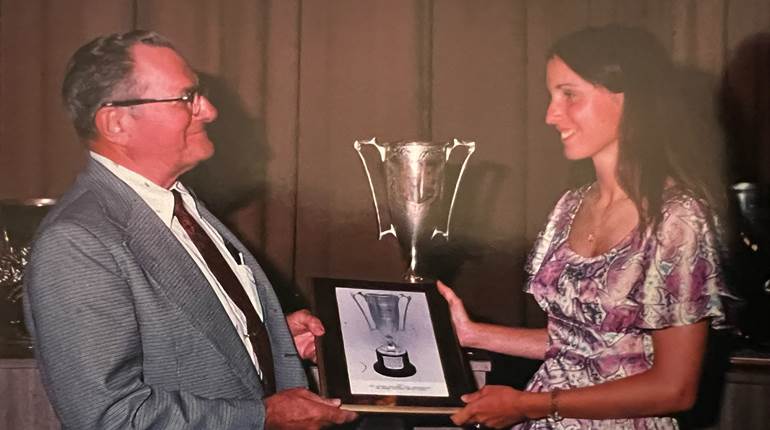
This article, "Farewell To An Enfield," appeared originally in the July 1989 issue of American Rifleman. To subscribe to the magazine, visit the NRA membership page here and select American Rifleman as your member magazine.
Shooters of the U.S. beware. Give way an inch to the anti-gun lobby, and you'll end up like the poor folk here in Great Britain. And it's not just handguns I'm talking about.
Regulations which have recently come into force have made all semi-auto rifles larger than .22 Long Rifle illegal. If you’ve got one (and each is individually licensed), you have to hand it in. After much hassle in parliament it’s been agreed you get paid for it—at the time of writing (February) just £150 ($260). It’s legalized robbery!
And now even shotguns have to be individually registered as well, although as yet, there’s no limit on the number you can have.
There’s always been a sneaky bit in United Kingdom firearms legislation, too. It forms Section 5 of the 1968 Act, and it allows the police chief of each area discretion to refuse a license. What happens if you’re getting on in years and a bit frail?

The other day, I witnessed a heartbreaking scene. The owner of a superb firearm, a sniper rifle from World War II, was virtually in tears as he hammered a bullet into the rifling at the breech end and then proceeded to fill the chamber with weld metal.
Why? His three-year license was due for renewal, and the police said he was too feeble to go hunting or paper-punching anymore. So, logically, he couldn’t have any use for it, he had to sell it if he could or surrender it to the authorities—with no compensation—and it would be destroyed. The thought of this was intolerable to the old chap, hence the welding exercise. At least that way he could hang it on the wall and dream of days gone by.
What days, too! As a Scotsman, he'd hoped to be drafted into a Scottish regiment, but it was not to be. Men from the draft were distributed among regiments that bore no connection to their home localities. Our man, then, found himself in a light infantry unit.

He did well there. Finding that he could shoot straight, he was sent on a snipers’ course and passed with flying colors. Then onto Italy with the 79th Division (the badge was a yellow battleaxe on a blue background—maybe some of you vets remember seeing it). On to Special Forces, a high score, a couple of wounds, and he was back on the civvy street.
Wanting a rifle for hunting and target shooting but not having a lot of pennies at the time, he looked around for one of the surplus No. 4 Enfields that were becoming available and that he knew so well. He saw one advertised, mail order, complete with scope sight. In due course, it arrived. Now, one thing a soldier remembers, after his ID number, is his rifle's serial number. The one-in-a-million chance had come up; this had been his very own tool, the one he'd scored with again and again.
For many happy years, he shot on the range, using the ordinary aperture sight but occasionally fitting the scope from its steel box when it came to taking a deer or two in the winter and the light was poor. This was one of the plus points of the No. 4. The scope could be dismounted, carried separately in a transit case and refitted immediately before action without any loss of zero.

The rifle itself was specially selected, in .303 British of course, and the battle sight, a 200-yd. zeroed peep, was milled off to permit mounting the scope, but the ladder sight was left intact. Two machined steel blocks were screwed to the left side of the receiver. Each has a threaded hole.
The bottom halves of the scope rings are an integral part of a steel bracket which carries two screws with two large knurled-heads. These screws locate in the receiver blocks, giving repeatability of lock-up every time. Naturally, the inevitable presence of machining tolerances meant that every scope rifle job was a one-off, and this is corroborated by the sight and rifle numbers being entered on a label in the transit box.
After 45 years (the combination was made in 1943), the scope's lenses are still clear although of only 2X. Eye relief is rather critical, of course. Each end of the scope tube has a slide-over shade, and the reticle is the post and rail type. The sight is fabricated from brass and immensely strong, but obviously this strength carries a weight penalty. In fact, the complete job, rifle plus scope, turns in at just 11 lbs., unloaded.

Of course, when used with the scope, the stock had to be higher than standard at the comb in order to get a firm "pinch" with the cheek. This was achieved by having a wooden block with two short pins which dropped into holes on top of the butt and was secured by a leather strap. Unfortunately, this block has gone AWOL over the years, but it would probably have added another 8 ozs. or so to the total, giving an all-up of over 12 lbs. loaded. Quite a handful.
But now all our old Tommy can do is doze and dream of that stag on the hill when the snow was 3-ft. deep and the sky a brilliant blue…that machine gun whose crew dropped one by one.



































